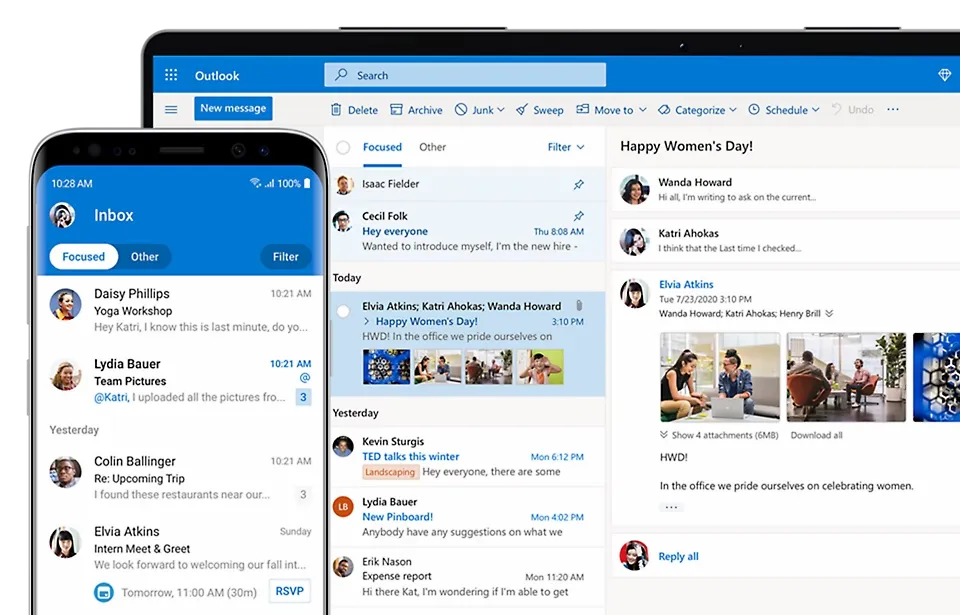“Teamwork makes the dream work.” Although John C. Maxwell first said these words in 2002, the quote remains relevant in workplaces today.

Team collaboration is an essential building block for successful businesses. When employees collaborate, organizations can expect to see increased levels of trust, a more engaged workforce, and improved performance.
One study has shown that collaborative teams are 5x higher performing because they feel motivated towards a common goal.
However, running a collaborative team environment can be challenging. It takes a concerted effort to integrate cooperative values throughout your whole company’s ethos.
Here, we’ll explore some strategies to give you a head-start toward managing your support team for collaboration. Plus, hear from ClickUp's CEO, Zeb Evans, on what teams get wrong regarding collaboration.
Jump ahead:
-
10 Collaboration Strategies
What Companies Get Wrong When It Comes to Collaboration, According to ClickUp’s CEO
Powerful Collaboration Tools
10 Collaboration Strategies
- Share the company’s mission over and over again.
- Communicate your expectations for collaboration.
- Highlight individuals’ strengths.
- Promote a community working environment.
- Encourage creativity.
- Share knowledge, insight, and resources.
- Lead by example.
- Get out of the office.
- Invest in collaboration tools.
- Celebrate and reward successful teamwork.

HubSpot's Guide to Workplace Collaboration
Actionable advice AND customizable templates to enhance your teamwork skills and build stronger, more successful teams.
- Templates to create smarter meeting agendas
- Frameworks to help boost brainstorming
- Techniques and tips for working in different scenarios
- And more!
Download Free
All fields are required.

1. Share the company’s mission over and over again.
Everyone needs a reason to show up daily — a cause to be part of and a broader objective to work towards.
Defining your company’s mission is the first step toward bringing people together under one common goal and working together to make it happen.
Your mission should be simple but meaningful. The more compelling, the better.
It’s your job to give your employees a reason — beyond the paycheck — to show up each day and become passionate about their work. The more passionate they are, the more likely they are to work together with their teammates to achieve the company’s mission.
Ensure you bring it up often to ensure everyone is clear on the mission — to the point where everyone on your team can repeat it independently. That way, when confronted with conflict or challenges, they can keep the mission in mind to stay focused.
2. Communicate your expectations for collaboration.
Similarly, if your team doesn’t know that you want them to work together, you can’t expect them to do so.
From the start, set your expectations for collaboration as a minimum standard. Even better, it should be part of your onboarding process so potential recruits know you prioritize teamwork.
Employees’ job descriptions should include details about individuals’ roles independently and as part of a team.
By differentiating these, you’re setting clear boundaries between what they should take personal responsibility for and what they need to work on collectively.
3. Highlight individuals’ strengths.
A Nectar survey reveals that 83.6% of employees admit that receiving recognition impacts their motivation to succeed at work. And 3 in 4 employees say they’d be more productive if they received frequent recognition for their work.
It goes without saying that it’s crucial to recognize each employee’s value to their team and the company.
Not everyone is a leader. Not everyone is a confident public speaker. But a successful team thrives when each member can bring their own set of skills to the table.
As part of your recruiting process, you’ll have already identified your employees’ specific strengths. Make sure you build on these strengths and emphasize them in collaborative environments.
When I was growing my content team, I needed to focus on the specific strengths of each person I was hiring and how those fit not only the duties of their distinct role but the collaborative efforts of the content team as a whole.
You can build on this by getting everyone to take a personality or skills test and share the results in a group setting.
4. Promote a community working environment.
A sense of community is crucial for collaborative working environments.
People will likely apply themselves more when they feel that their opinions matter. Conversely, when people know their opinion doesn’t count, they feel redundant, and team-playing disintegrates.
But getting the conditions right can be tricky. You want to avoid inundating your team with endless meetings and insist on collaboration for collaboration’s sake. After all, not all tasks need to be worked on as a team.
A daily morning huddle is a good starting point. At the same time each day, invite your team to get together and discuss their goals, tasks for the day, and opportunities where teamwork would be beneficial. These environments can help teams to align themselves and avoid duplication or oversight.
Another way to promote a collaborative work environment is by fostering honest and open communication. The more people feel they can contribute, the more ideas can be shared, and the more productive the team will become.
However, this part of the process might take some work for the more introverted team members.
If you create a psychologically safe working environment where team members feel safe from judgment, they are more likely to speak openly and contribute their ideas freely. The safer the environment for communication, the more collaborative that space will become.
5. Encourage creativity.
A collaborative team is an innovative one. Likewise, creating the space for creativity will help foster collaboration. It’s a virtuous circle.
Brainstorming sessions can be a great way to open up your team to creative thinking. An environment where they can propose and challenge ideas will help employees feel like they have a stake in the company’s mission.
I often find brainstorming sessions daunting for some team members, especially if they’re sprung on them without warning. To work around this, I give my team a heads-up the day before to allow everyone to prepare their thoughts in advance.
6. Share knowledge, insights, and resources.
Knowledge, as they say, is power. And if knowledge is shared amongst your team, they will feel more empowered to contribute on an even playing field.
File-sharing and internal collaboration software can help your team access the resources they need to do their jobs.
But go further. Create physical and virtual spaces where your team can share their insights, discuss their failures, and give each other constructive feedback.
7. Lead by example.
You can strategize for collaboration as much as you like, but if you don’t exhibit collaborative behaviors yourself, this will filter down to your employees.
As a collaborative team leader, you must demonstrate cooperation at every turn.
One-on-ones are a great place to start. Focusing some one-on-one time at regular intervals with each of your team members demonstrates that you are ready for dialogue.
The way you deal with requests and the way you make promises also indicates how you really feel about collaboration. When your employee comes to you asking for support, then honor their request. And only make promises that you know you can keep.
The more your team can trust you to have their back, the more that trust will filter down through your team. And, in turn, the more productive they will become.
8. Get out of the office.
I’m not just talking about corporate event after corporate event, but offsite team-building works.
Getting out of the office regularly helps teams build relationships based on mutual interests rather than what they share in common within working hours. It helps employees see each other as humans rather than just colleagues.
But this doesn’t need to wait for offsite events. An impromptu morning coffee or an afternoon beer can help solidify relationships and get your team gelling. Some smaller companies adopt a more regular arrangement where team members “buddy up” and go for lunch one-on-one, rotating amongst the team.
9. Celebrate and reward successful teamwork.
How you measure your team’s success will signal what kind of company you are. If you reward effective teamwork and successful collaboration, you communicate the values underpinning your business.
When you design your employee appraisal metrics, focus on team collaboration and individual successes. Make it clear that your employees’ team efforts will be noted and collaborative achievements rewarded.
10. Invest in collaboration tools.
Creating a digital workplace is the most practical thing you can do to ensure long-term collaboration in your team. And uptake is increasingly high, with many businesses using social collaboration tools to advance business processes.
Given the rise in remote and hybrid work, it’s worth investing in the right tools to enable teams to work together without being in the same physical space.
Your digital workspace can look however you need it to. You don’t have to go all-out immediately, and your spending can be modest initially. The trick is to try different tools and see what works best for your team.

HubSpot's Guide to Workplace Collaboration
Actionable advice AND customizable templates to enhance your teamwork skills and build stronger, more successful teams.
- Templates to create smarter meeting agendas
- Frameworks to help boost brainstorming
- Techniques and tips for working in different scenarios
- And more!
Download Free
All fields are required.

What Your Team Gets Wrong, According to ClickUp’s CEO
Collaboration can seem relatively straightforward, but effective and scalable collaboration is a different story.
Let’s dive into some of the biggest roadblocks to successful collaboration, according to Zeb Evans, ClickUp’s founder and CEO.
1. Your team hosts too many meetings without a clear goal.
Hosting meetings with your team can be a strong opportunity for collaboration — but too many meetings might get in the way of productivity.
As Evans told me, “One of the biggest problems I see is there are too many meetings today, and they can be a very inefficient use of time. Oftentimes, there are too many people who don’t need to be in certain meetings, and there aren’t enough clear goals around the meeting.”

To combat this, consider where you can cut down on unnecessary meetings or limit meeting attendees.
For instance, say your team hosts a weekly standup where they each discuss what they’re working on in a given week. To create more purpose behind the meeting, you might suggest each colleague instead bring one challenge they’re currently facing in their roles so your team can help support and provide fresh solutions.
Alternatively, examine the weekly and monthly recurring meetings on your agenda and ask yourself:
- Which ones could become asynchronous?
- Which ones might only need to take place once per quarter?
- Which ones could we consolidate or get rid of?
2. Your team doesn’t leverage software to create stronger alignment.
Evans continues, “There’s too much work about work in general. Too much planning of work, managing of work, communicating about work … Rather than just focusing on the work itself. And that’s when it becomes inefficient.”
To combat this roadblock, Evans suggests teams move to a single-platform approach.
As he puts it, “In five to ten years, we’ll have more of a connected work ecosystem where all work is either in a single platform, or a single connected platform … not necessarily replacing everything, but at least connecting with everything so you remove inefficiencies, you have transparency, and you have a level of alignment that currently doesn’t exist.”
He adds, “In the next couple of years, we’ll also see the execution of work align much more closely to the communication around the work.”
Leveraging an all-on-one platform is critical for reducing the inefficiency that comes with too many disparate solutions. Without getting your entire organization on one platform, you risk losing the context you need to scale projects effectively.
As Evans told me, “With multiple channels, multiple DMs, and multiple platforms, context can get lost … but if all of the context is in the same place, then you don’t have to repeat yourself, you don’t have to continuously ask where things are, and you don’t have to ask for status updates or have meetings for alignment; all context is already in the same place.”
3. Your organization lacks transparency.
Collaboration is difficult when you’re not aware of what other teams are working on, and you work in silos across the department.
Having clear transparency into leadership’s goals and how each team’s strategy contributes to that overarching goal will help you successfully identify strong areas for collaboration that will help both teams reach that unifying goal.
Evans says, “To have effective collaboration, there needs to be ultimate transparency. Communication needs to happen in the same place, and you need general alignment so people know what other people are working on.”
“Of course,” he adds, “There are many ways to solve this through software.”

Powerful software is the easiest way to introduce transparency across the company. If all your teams operate on one platform, each employee can easily see other projects happening across the org.
For instance, perhaps you’re a blogger and see the social media team working on a leadership series next month. To get involved, you message the team and ask if you can create a leadership post for the blog that will be featured on the Instagram channel as part of the campaign.
Ultimately, removing these roadblocks will help clear the way for true, valuable, and effective collaboration within your team and across the organization.
Speaking of tools, let’s dive into a few team collaboration tools in the section below.
Team Collaboration Tools
- Loom
- Google Drive
- ClickUp
- Asana
- Dropbox
- Slack
- Flock
- Samepage
- Google Calendar
- Outlook
- Zoom
1. Loom
Team Collaboration Tool: Video Communication
Loom is a video communication software that records actions performed on your computer. You can explain its steps out loud, and Loom will use your computer’s microphone and camera to capture the entire technical process.
So, if you’re describing a complicated task to your customer service team, you don’t have to meet in person to demonstrate the process. You can easily edit and upload the videos so your team can quickly share them after recording.
.webp)
This is also particularly useful when onboarding new employees. You can record training, and then save it to your knowledge base for later use. That way, you don’t have to set up a formal meeting for company-wide training.
Price: Free
2. Google Drive
Team Collaboration Tool: Shared Documents
If you haven’t tried Google Drive, it’s one of the best options for creating, collaborating, and sharing documents.
You can create Word docs, PowerPoint presentations, spreadsheets, forms, and many other types of team-based resources. The best part? Google Drive has ample storage, so you can create as many documents as you’d like — or pay for extra storage.

Google Drive is great for teams who want to work together on projects. Every document can be shared via email, or you can create a link that takes coworkers directly to your project.
If you don’t want certain users to make changes without approval, you can also control permissions over who can edit the document. Additionally, coworkers can leave comments and suggestions rendered automatically on the piece once they’re accepted.
Price: Free
3. ClickUp
ClickUp is an all-in-one collaborative hub that enables you to work across teams and streamline your operations. Built-in apps, like Whiteboards, Docs, Dashboards, task management, and more, allow you to leverage one centralized location to communicate cross-functionally.

Regarding Customer Service, ClickUp enables teams to add multiple assignees to support tickets, set specific custom fields based on clients or ticket type, and flag and link everyday tasks so you can streamline and scale your service processes.
Best of all, ensuring your support team works from one centralized location helps your team provide a stronger, more compelling customer experience.
Price: Free for personal use, or $19/month for Business Plus.
4. Asana
Team Collaboration Tool: Project Management
Asana is a project management platform that can help your team effectively manage projects.
Its features can assist engineering teams when planning sprints, advise marketing when composing their editorial calendar, and track deals that are nearing close for your sales agents. Needless to say, it has something for everyone at your business.

One cool feature that makes Asana stand out is its “Workload” monitor. This tool analyzes how much work each employee is handling and lets you know who’s working on what and whether their workload will take longer than their scheduled work hours. These alerts prevent employees from burning out and keep them happier over time.
Price: Free
5. Dropbox
Team Collaboration Tool: File-Sharing
Dropbox is a file storage and sharing software for distributing and tracking documents.
You can compose a document on your computer, upload it to Dropbox, and your entire team will have access to that file — saving you a lot of time from emailing PDFs and PowerPoints to everyone individually.

Once those documents are shared, you can track who opens and views them on your team. You’ll know who’s engaging with your content and who may need to catch up on updates. This keeps employees accountable and ensures everyone is up-to-date on current information.
Price: $15/month
6. Slack
Team Collaboration Tool: Internal Communication
Slack is a popular team collaboration tool, and for good reason. Informally dubbed “The instant messenger for businesses,” it lets you chat with anyone at your company.
Employees can set up team channels where they can continuously chat with each other and ask questions in a casual, collaborative environment. Instead of calling meetings or scrambling across the office, teams from every department can work together right from their desks.

One great feature of Slack is that it’s very customizable. You can integrate new tools and adjust the interface to behave precisely how you want it. For example, you can create a personalized onboarding message that launches whenever a new user is added. This message can contain information and tips on using the app so your new employees ramp up as quickly as possible.
Price: $7/month
7. Flock
Team Collaboration Tool: Internal Communication
Like Slack, Flock is another powerful communication tool many businesses use to chat internally. However, where Flock differentiates itself is through its additional features. It has various specialized tools that take its platform to the next level.

One example is its video conferencing feature. If you’re chatting with someone, you can seamlessly transfer the conversation to a video call. That way, remote employees can interact with people at your office face-to-face.
Price: Free
8. Samepage
Team Collaboration Tool: Intranet
An intranet is a private communication network businesses use to communicate internally. It hosts every tool that employees need to collaborate during their workflow. This keeps the company’s information organized since all its communication passes through a centralized interface.

Samepage is an example of an intranet provider that businesses use for communication. It combines chat, video conferencing, screen-sharing, task management, and file-sharing into one platform. It’s an excellent option for larger teams that want to save time jumping between software.
Price: Free
9. Google Calendar
Team Collaboration Tool: Calendar-Sharing
Productivity slows down if you’re not sure when people are available to meet — especially if you’re trying to organize teams across departments where schedules don’t always align.

Google Calendar solves this issue by providing a shared-calendar experience for your employees. They can log when they’re busy and free, then make their schedules accessible to their coworkers. You’ll know exactly when to hold a meeting because you’ll see whether team members are available or not.
Price: Free
10. Outlook
Team Collaboration Tool: Calendar-Sharing
A rival to Google Calendar is Outlook, which competes with Google when it comes to its shared calendar features. Outlook’s calendar syncs to your email, so any events you accept in your inbox will automatically appear on your schedule.

You can also view your schedule side-by-side with a coworker, which can help you decide whether or not to accept a pending invitation.
Price: $7/month
11. Zoom
Team Collaboration Tool: Video Conferencing
If you want to speak with remote employees in real time, Zoom can help with your video conferencing needs.
With Zoom, employees from all over the world can speak with each other in a face-to-face setting. You can launch meetings instantly or schedule them ahead of time via your digital calendar.
Zoom also has screen-sharing features. If you’re in a meeting and a remote employee wants to present, they can share their screen so that everyone sees their presentation.
This benefits management as they can record these sessions for employees who may be sick or couldn’t make the meeting. Between the recording and visual aid, these employees won’t miss a beat.
Price: Free
Collaborating Better
Collaborative teams are more productive, and companies that know this invest time and resources in creating environments conducive to teamwork.
These environments are creative, open, and trusting. They are inclusive and praise individual contributions towards common goals. They value knowledge-sharing and information transparency. And they invest in the tools and technology that make collaboration happen.
Whether you’re a large corporation or a small startup, whatever your industry, product, or service, you can move towards a collaborative setting today and start seeing results from a happier, more valued — and valuable — workforce.
To learn more, read our tips for improving team communication next.
![Download Now: Complete Guide to Collaborating at Work [Free Guide + Templates]](https://no-cache.hubspot.com/cta/default/53/7b7e92ee-1d6f-46e1-a984-3c0aa19eb448.png)









![How to Set 'Smart' Customer Service Goals [Examples]](https://www.hubspot.com/hubfs/customer-service-goals_3.webp)
